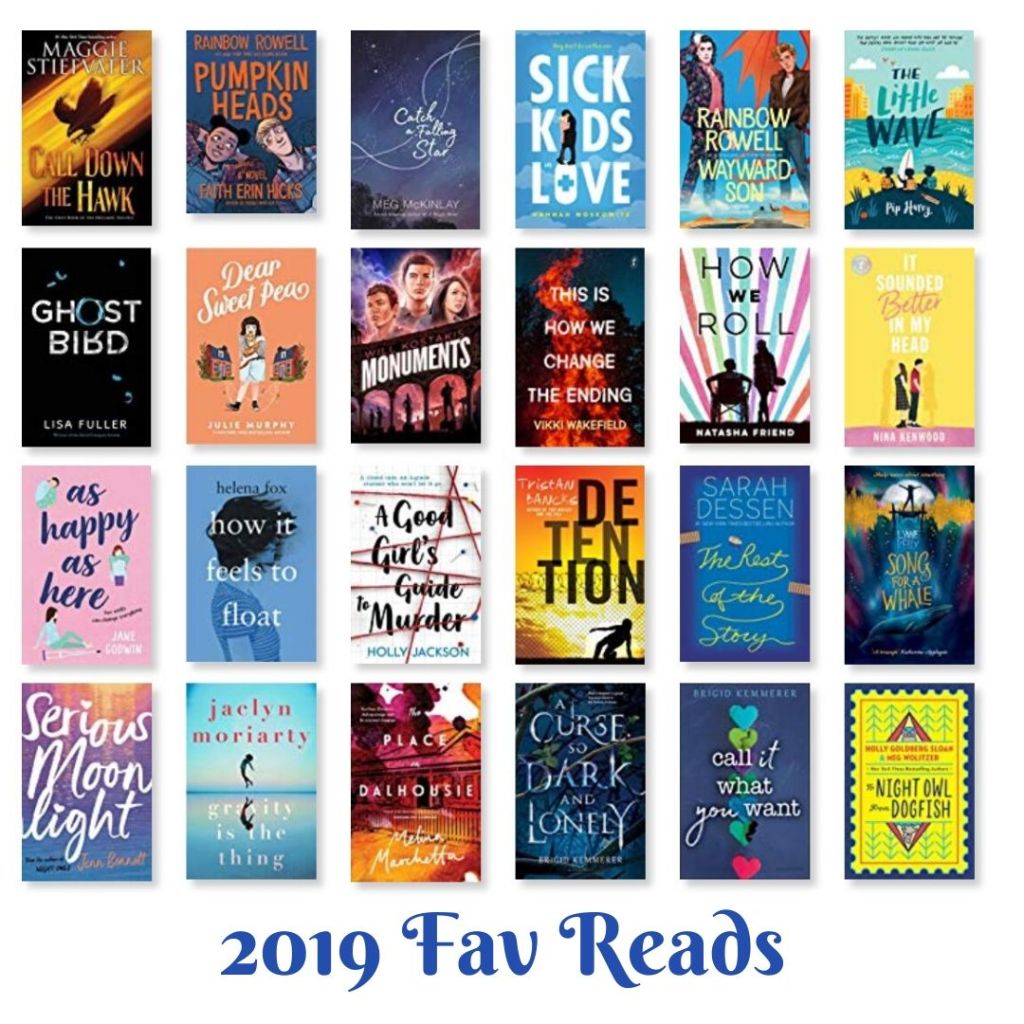
I have read 180 mostly young adult and middle years fiction books (so far) in 2019. I have cut those down to a list of 24 (how? I do not know). See picture above. The most important concerns that were felt in the YA community this year seem to be #ownvoices and positive representatives of rarely seen or heard minority groups. I believe I have included excellent examples of these, including How We Roll, How it Feels to Float, and Ghost Bird. I seem to also have a bias toward LGBT stories (too many to list), and am happy to see an increasing number of books for younger teens.
I then whittled that crazy long list down to only 5. Look, on any given day, it could have been a different five. I cast my eye over my choices now, and I find myself second guessing decisions. So basically I loved them all a lot.

Three of them are squarely contemporary YA, and reflect a range of intensity — from full on gritty realism (This is How We Change the Ending) through to happy, flirty romance (It Sounded Better in my Head). Call it What you Want fits neatly between these two #loveOzYA books, developing strong social issue story lines as well as a realistic love story. All of these books demand that their protagonists confront some very harsh truths about themselves and the choices they make, and organically allow them to navigate their own way through. I hope they find readers who will not only identify with their anxieties, but who will also be able to conquer some of their own life stresses. Reading is both therapy and escape.
To Night Owl from Dogfish represents my growing interest in books for 12 to 14 year olds. Honestly, they are the largest audience for my school library borrowing, and seeking out the full range of genres for them, to try to cater for every different reading taste, has become a priority and a godsend. These readers are so appreciative of efforts to provide them with accessible and satisfying material. There is much job affirmation to be gained from what might seem to be a chore (but clearly isn’t). Anyway, it is a funny warm novel, developing a terrific friendship between two unlikely girls. Their care and support of each other shines through their scrapes and sulks. The fact that it is written entirely through emails, text messages and a variety of other epistolary means, challenges this age group initially, but I have only heard glowing reviews from students. It’s a really enjoyable read.
I cannot make a list of favourite reads without including a new Marchetta. Those of us who started way back in 2004 with Saving Francesca have been waiting patiently for Jimmy’s story, and The Place on Dalhousie lives up to all expectations. A slim, tight novel, Marchetta nails what she always does best: creating complicated, messy families from air, bringing them together even when (especially if) they don’t want it. So much laughter is here. But also a feeling of nostalgia for people gone. It struck me with all the feels, but that is typical of this author. Her writing seems to tick every one of my reading boxes.
I wonder if next year we will be showered with more climate novels–not in the dystopian, set in the near future scenario–but in the right-now, it’s happening and what can be done situation. It seems highly likely given it’s the number one concern for teenagers across the world. And of course, it’s not only young people facing up to an uncertain future, it’s all of us.














